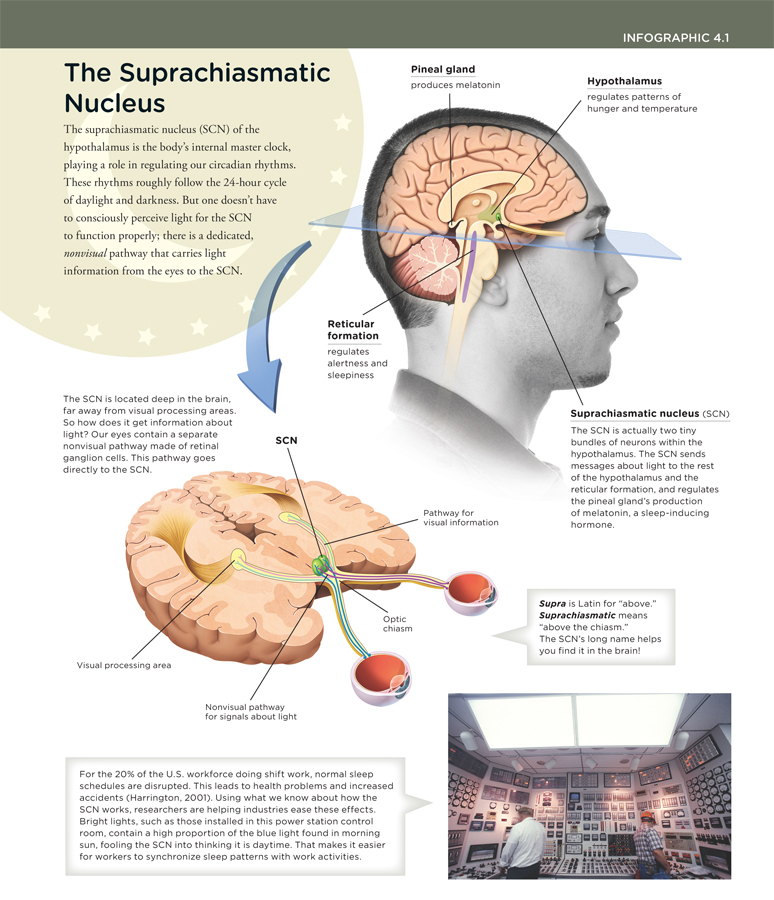Chapter 1. The Suprachiasmatic Nucleus
Infographic
The suprachiasmatic nucleus (SCN) of the hypothalamus is the body’s internal master clock, playing a role in regulating our circadian rhythms. These rhythms roughly follow the 24-hour cycle of daylight and darkness. But one doesn’t have to consciously perceive light for the SCN to function properly: there is a dedicated, nonvisual pathway that carries light information from the eyes to the SCN.

1.1 Quiz
QUESTION: Before he goes to sleep one night, Liam sets the alarm clock on his cell phone for 7:30 the next morning. He makes a mistake, though, and chooses 7:30 pm instead of 7:30 am. At around 7:20 the next morning, he wakes up all by himself, even though the cell phone never rang. Thankfully, the part of his brain called the __________ acted as his own internal alarm clock and he did not miss his important meeting at work.
1.2 Quiz
QUESTION: Which of the following structures does not seem to be specifically involved in the regulation of the sleep-wake cycle?
1.3 Quiz
QUESTION: After she got home from work, Louise decided to spend the whole evening working on the project she needed to complete for work. She sat at her desk, typing on her computer for several hours before she took a break. When she stood up she was surprised to find how much time had passed, and noticed that it was already dark outside. Very soon after she started feeling very sleepy and yawning. Which hormone has probably been released in higher amounts in Louise’s bloodstream in the last several minutes?
1.4 Quiz
QUESTION: Julian was born blind, and has never had a “visual” experience. He sees nothing, not even shades of light or black and white. Given what Infographic 4.1 says about light and the sleep-wake cycle, do you think that Julian will be more likely to feel tired when it is dark outside than when it is light outside?
1.5 Quiz
QUESTION: Which part of the endocrine system is responsible for increased secretion of melatonin when it is time for a person to get sleepy?
1.6 Quiz
QUESTION: If you were the manager of a security company whose job it was to provide overnight monitoring of computerized security systems, which of the following would you be advised to do to help your nighttime workers synchronize their sleep patterns with their work demands?
Activity results are being submitted...